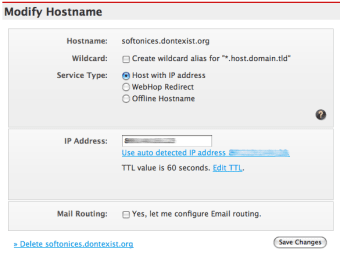
- DYN UPDATER FOR WINDOWS 10 REGISTRATION
- DYN UPDATER FOR WINDOWS 10 PASSWORD
- DYN UPDATER FOR WINDOWS 10 WINDOWS
If you call the URL from your own home network via any device in the browser, the IP address of the previously created domain name changes to the public IP address of the Internet access.
DYN UPDATER FOR WINDOWS 10 REGISTRATION
Already during registration a DNS name is created:ĭetailed instructions are listed for the setup: Most recently, I used the DynDNS service of. DynDNS in practice: Concrete example with If you want to operate your own DynDNS service, you can already do this with a classic V-server or cloud server of a hosting provider. The prerequisite for an own DynDNS service is a registered domain, the entry of a name server in the DNS zone and a web server with a static IP address. As an example, there are some ready-made projects, including in the form of Docker containers, with the help of which it is very easy to run your own DynDNS service. The multitude of different DynDNS providers can probably be explained by the fact that the technology behind DynDNS is not really complex. In the private network the router accepts the connection and forwards it by means of port forwarding to the responsible web service. The connection to the private Internet access is established.
DYN UPDATER FOR WINDOWS 10 WINDOWS
If the functionality is not available at the router, the task can also be performed by any other device on the internal network, as an example by a Docker container, a scheduled Windows task or Linux cronjob.ĭevices on the Internet can change the DNS name for the connection to the private Internet access.Īs with any access, the responsible DNS SERVER, here DynDNS server resolves the DNS name to the IP address. In order for the call to take place regularly, this task can be performed by certain routers. The IP address of the private Internet access does not have to be transmitted in the request, because every TCP-IP request includes the source IP address, see Show your own public IP - what is my IP address? For updating it is sufficient to simply call a URL with the corresponding credentials from your own network via a browser.
DYN UPDATER FOR WINDOWS 10 PASSWORD
A username and password or a unique key as well as the created DNS name are included in the request. The technique behind this is relatively simple: The DynDNS SERVICE needs the information to which stored DNS name the request belongs, which is done by sending credentials of the previously created account. When contacting the DynDNS service from the private network, the IP address is updated for the previously created DNS name, here. So that the DynDNS service knows the correct IP address, the service must first be contacted from the own network by calling a certain URL. The following schematic illustration shows how it works:

First of all, an account with a DynDNS provider and a stored DNS name are required. As unique identifier a username and password, or a specific key can be used. The DynDNS service needs a unique identifier in the call, so that it is able to link the request to the correct DNS name.

The call can be made from the router or any device or service from the internal network. As client a simple script is sufficient, which regularly initiates a HTTP GET call, similar to the call of a URL via the browser. In order for the service to know the current IP address of the Internet access, the DynDNS service must be contacted regularly by a client service from the private network. The core is a DNS server of a DynDNS provider with an extension for dynamically adjusting the entries. The technology behind DynDNS is very simple. With DynDNS, web services can be published from the private network even if the Internet connection does not have a fixed IP address. DynDNS updates the IP address of a DNS record when the IP address of the Internet access changes. What is DynDNS?ĭynDNS is a service on the Internet for dynamically updating DNS records. If the Internet provider assigns a different IP address for each connection, a DynDNS service can react to this and enable access via a constant DNS name. Anyone who wants to access a private network from the Internet may need a DynDNS service ( dynamic DNS, DynDNS or DDNS) for this purpose.


 0 kommentar(er)
0 kommentar(er)
